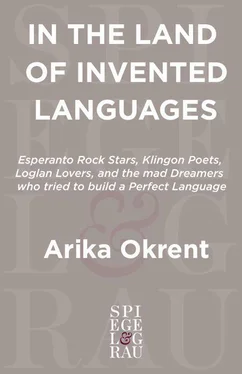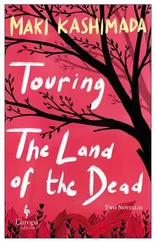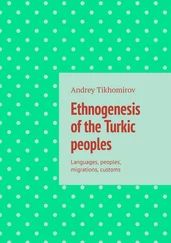Yiddish was the language of the European Ashkenazi Jews, and many of them argued that Yiddish should be the language of Jewish nationhood. Had they established a territory in Europe or the United States, rather than in Palestine, this is probably what would have happened. But in Palestine there were North African Jews, who spoke North African Arabic; Mediterranean Sephardic Jews, who spoke Judeo-Spanish; and local Jews, who spoke Palestinian Arabic. There were already significant cultural differences between these Jews and the Yiddish-speaking European Jews, who were viewed as not-always-welcome newcomers.
Ben-Yehuda saw that Hebrew was shared more broadly by the Diaspora and had more potential as a unifying force. His writings and actions inspired a small group of others to follow his lead. A few other families declared themselves Hebrew-only households, and a few more declared that they personally would only use Hebrew in all their daily interactions. These were the early years of the first aliya, an influx of over twenty thousand immigrants from Europe, and as they established small agricultural colonies in a new, strange place, many of them were receptive to new language habits. Some teachers began to teach Hebrew in these colonies through the direct method—just jumping in and speaking the language, without commentary or explanation in Yiddish, Russian, or any other better-known language.
They were all, to a certain extent, making it up as they went along. How do you say, in a language of obscure theological debate and ancient ritual, “washcloth” or “doll” or “typewriter”? If Ben-Yehuda wanted to do something as simple as ask his wife to pour him a cup of coffee with sugar, he was reduced to gesturing while saying, “Take such and such, and do like so, and bring me this and this, and I will drink.” It takes a lot of work and patience to run a household or a classroom this way.
Some conscious intervention was required. Ben-Yehuda would comb through ancient Hebrew texts, looking for long-forgotten words that might serve for the needed concepts. He also looked through more recent Hebrew literature, which had already done a good bit of grappling with vocabulary gaps. But the solutions that had been proposed in this literature were often too conservative, clunky, and inappropriate for natural, fluent language use. A tuning fork was referred to as “a bronze fork with two teeth that produce a sound.” A word for “telegraph” had been coined by adapting the following lines from Psalm 19:4—5: “There is no speech, there are no words, neither is their voice heard. Their line is gone out through all the earth and their words to the end of the world.”
Ben-Yehuda sought simple, natural-sounding solutions, and he often resorted to making them up himself. Others did the same, and this led to a great deal of variation in the way Hebrew was spoken. A newspaper editorial complained: “Here they say gir ‘chalk’ and here neter and here karton . This one says xeret ‘letter’ and this one mixtav . One says shemurat _ayin or af’ af for ‘eyelash’ and another, risim . In one school it is called a bima ‘teacher’s podium,’ in another a katedra and in another a maxteva . This one says sargel ‘ruler’ and that one sirgal , this one safsel and that one safsal_ .” Pronunciation also varied between the Sephardic and the Ashkenazic styles.
Though language academies were established in 1890 and 1904, they accomplished very little in the way of top-down enforcement of language norms. There was no standard or accepted authority. Though Ben-Yehuda introduced many of the words he created into general circulation by using them in articles he wrote for his Hebrew-language newspapers, he did not draw attention to them or comment upon them at all. Though the language was being manipulated quite consciously by individuals in various places, it was difficult to determine who was pulling the strings, and so the process managed to avoid seeming imposed and artificial.
Beginning in 1904, another wave of immigration from Europe, the second aliya, brought thousands more Jews to Palestine, many of them from Russia, where another bout of violent pogroms was under way. They were fired up on socialism and full of optimistic energy. Office clerks and doctors learned to plow soil and shovel manure on the newly established collective farms. Teachers and accountants built roads and laid foundations for new Jewish towns. These immigrants were willing to change their lives in dramatic ways, and many of them (but by no means all of them) were willing to change their language, too.
They made Hebrew the language of formal education in kindergartens and schools throughout Palestine. There were still a number of schools that used French, English, or German, but after the 1914 “language wars,” when teachers from schools across the land went on strike to protest the decision that German, not Hebrew, would be the language of instruction at the Technion (a modern technical school recently established by a German Jewish charitable organization), Hebrew became the dominant language of education. The kids took it from there. As modern studies of the development of Creoles from pidgins, or of native sign languages from home sign systems, have shown, a generation (or two) of children can turn the effortfully produced, inconsistent input of the adults around them into a fully fledged, effortless native vernacular. The children of the second aliya were exposed to Hebrew early enough, and in a natural enough manner, that they were able to do this.
What accounts for the success of the revival of Hebrew? It certainly wasn’t efforts on the part of any official institution. Putting a language into the schools or onto street signs is no guarantee of success (as illustrated by the Irish example). Nor was it a sense of cultural pride in the language. Maori (the native language of New Zealand) and Hawaiian fail to flourish, despite large-scale government support and a hearty emotional response from the people who are supposed to be reviving the languages (but aren’t). In dozens of movements struggling to bring dying languages back to life, there have been people with passionate conviction working very hard. The revival of a language doesn’t depend on one inspired crusader, or even a group of them. How do you get people to speak a language they don’t speak? Invented or otherwise?
One thing that seems to be very important is circumstances—as in right time, right place. If the Jews had decided to establish a nation in Uganda or Texas (both serious proposals at the time), would they be speaking Hebrew today? Probably not. If the situation in Europe hadn’t sent a second wave of immigrants to Palestine, would the small movement that Ben-Yehuda established have petered out? Perhaps.
Hebrew and Esperanto are very different languages with very different origins. But their successes—that of revival for Hebrew and that of being brought to life in the first place for Esperanto—overlapped in their timing and in their reasons for occurring. Esperanto also benefited from circumstances. If Zamenhof hadn’t come on the scene just as the Volapilkists were jumping ship, would anyone have paid attention? If the situation in Europe hadn’t highlighted the violent perils of nationalism, would so many have been attracted to his message of unity? If both the Hebrew revival and the Esperanto movements hadn’t begun during the golden age of socialism, when the prospects for grand social-engineering experiments looked so bright, would the Jewish immigrants have so willingly believed that it was possible to overhaul the language habits of an entire society? Would enough people have believed in the utopian dream of a universal language to try to make it happen?
Читать дальше












